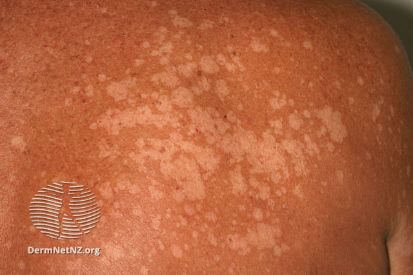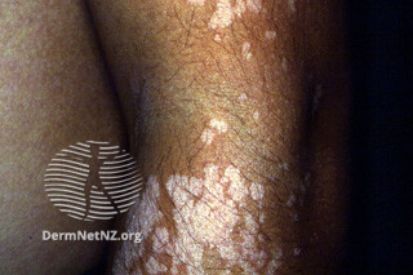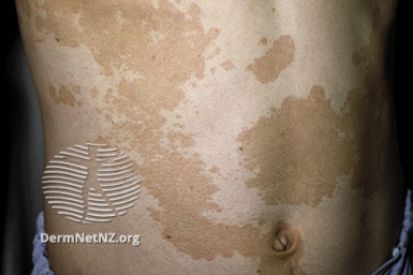Tinea Versicolor
Understanding Tinea Versicolor
Tinea versicolor is not contagious and can be effectively treated with antifungal medications. Symptoms include mild itching, scaling, and noticeable changes in skin color.
Effective Tinea Versicolor Treatment at Riva Dermatology
Riva Dermatology offers targeted treatments for tinea versicolor, including topical and oral antifungal medications. Our dermatologists provide personalized care to restore your skin’s natural appearance.
Examples of Tinea Versicolor




What are the Symptoms of Tinea Versicolor?
- Patches may be pink, tan, or brown.
- Can merge to form larger areas.
- Tinea versicolor is more noticeable after sun exposure because the fungus inhibits the normal tanning response.
What Causes Tinea Versicolor?
- Tinea versicolor is caused by an overgrowth of the yeast-like fungus (Malassezia) on the skin.
- The fungus disrupts normal pigmentation, leading to the development of discolored patches on the skin.
- Factors like heat, humidity, and oily skin can contribute to the overgrowth of Malassezia.
Tips on How to Prevent Tinea Versicolor
Tips for preventing tinea versicolor that you can try while you wait to see a dermatologist include:
- Avoid excessive heat and humidity whenever possible.
- Keep sun exposure to a minimum, and avoid other elements that can darken your skin such as tanning beds, as this can enhance discoloration.
- Wear clothing that is loose, breathable, or made of wicking materials.
- Avoid skin products that are oily, ideally choosing oil-free or non-comedogenic options.
- Use anti-fungal shampoos and creams. When using creams, apply to clean and dry skin according to package instructions.
Tinea Versicolor FAQs
Tinea versicolor is a fungal infection that causes small, discolored patches on the skin. These patches can be lighter or darker than the surrounding skin.
Tinea versicolor is caused by an overgrowth of yeast on the skin. Factors such as warm, humid weather, oily skin, and a weakened immune system can contribute to its development.
Treatment includes antifungal creams, lotions, or shampoos. In some cases, oral antifungal medications may be prescribed for more severe infections.
Preventive measures include keeping the skin dry and clean, avoiding excessive heat and humidity, and using antifungal products as recommended by a dermatologist.
Tinea versicolor is not considered highly contagious. It mainly affects individuals predisposed to the yeast overgrowth rather than spreading easily from person to person.
Treatment Options for Tinea Versicolor
If tinea versicolor is diagnosed, dermatologists may prescribe oral antifungal medications. It's essential to follow the prescribed treatment regimen consistently to ensure effective resolution of the infection. To create your personalized tinea versicolor maintenance plan, schedule a consultation with Pinnacle Dermatology.
Featured Products
Check your local office for current stock!
Check your local office for current stock!


